Router glossaryA-C |
||||
 |
||||
A |
||||
 |
Above table adjustmentAbove table adjustment involves altering the height of the router (and cutter) from above the router table. There are various methods of above table adjustment including router lifts and built-in height adjusters. Not all routers than can be mounted in a table have this feature, some need to be adjusted from below when mounted in a table. |
|||
 |
AcrylicAcrylic is a type of plastic, often listed under trade names such as Perspex, Plexiglas and Oroglass. It is often used as an alternative to glass. For a superior finish, it's usually recommended that you use high-speed steel (HSS) router cutters to machine acrylic. |
|||
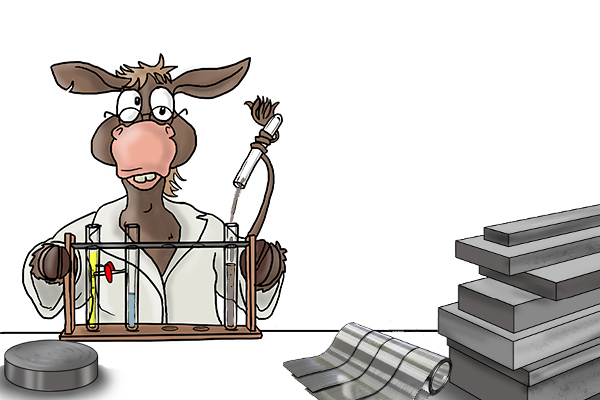 |
AlloyAn alloy is a metal made by combining two or more metals to produce a final product which has more desirable properties than the individual elements from which it was made. Carbon steel is an example of a steel alloy that consists of iron and carbon. |
|||
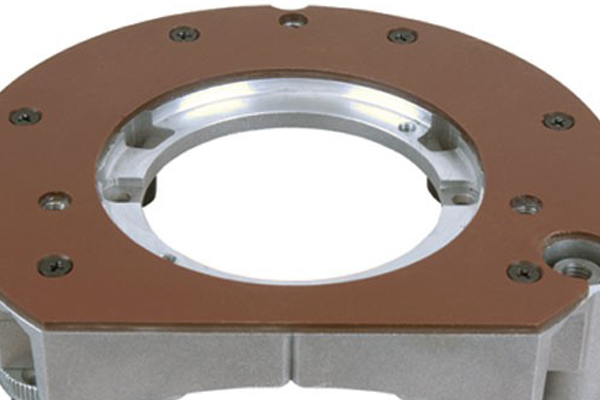 |
ApertureAn aperture refers to an opening in a material or router base. For example, when installed in the collet, a router cutter fits through the aperture in the router's base. |
|||
 |
ArborArbor-mounted router cutters consist of a spindle onto which a variety of groovers or profile blocks can be placed, along with spacers and a locking nut. Sometimes, a ball bearing is also fitted onto the arbor to act as a guide when cutting. The arbor makes up the body of the router cutter. |
|||
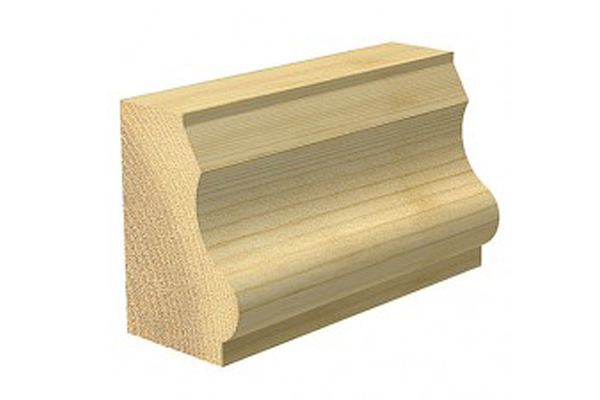 |
ArchitraveAn architrave is a moulded framework designed to surround doors, windows, and other openings. Architraves can be cut with a router in a variety of shapes. |
|||
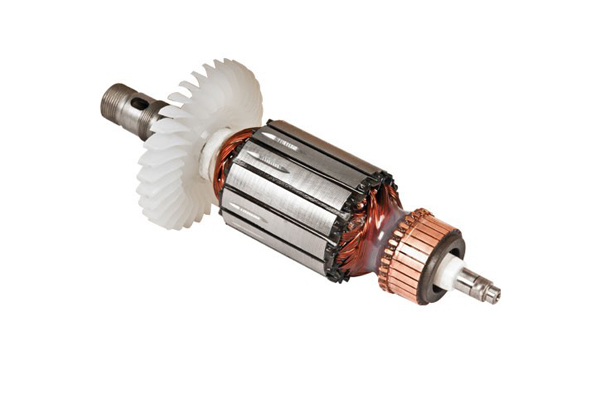 |
ArmatureArmatures are found on carbon brush motors and include the commutator, rotor, and windings. On one end of a router the armature is a thread that holds the collet and nut assembly. They can be bought as spare parts. |
|||
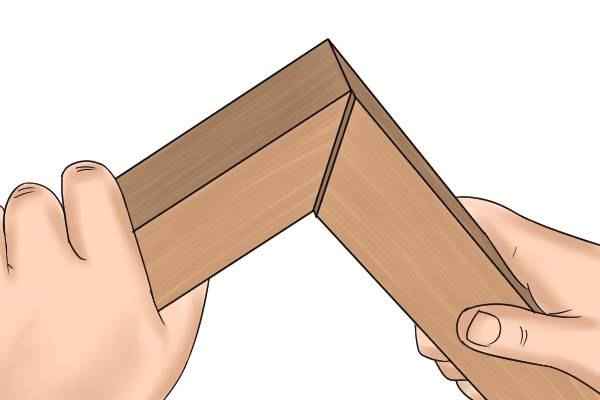 |
ArrisAn arris is a sharp edge formed where two surfaces meet at an angle. For example, two mitre cuts may be used to form the corner of a picture frame. |
|||
B |
||||
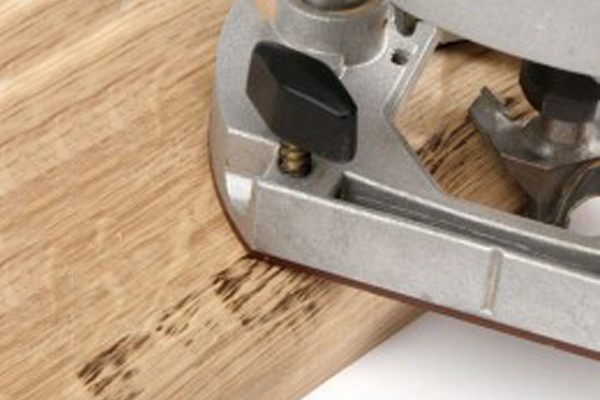 |
Back-cuttingBack-cutting is the process of cutting in the opposite direction to the rotation of the router cutter. Cutting right to left with a hand-held router, or left to right on a table router would be considered back-cutting. Where possible, back-cutting should be avoided. An exception may be when the workpiece is locked firmly into a jig. |
|||
 |
Back-fenceA back-fence is a router table accessory usually consisting of a 90-degree surface against which the timber or other material is passed in order to keep it in an exact position relative to the router cutter. They usually come with new router tables. All the parts of back fences should be available as spare parts if they need replacing. |
|||
 |
Barley twist mouldingBarley twist moulding is a type of spiral pattern resembling a twisted rope. It can be produced easily with a Trend router lathe and ovolo veining cutter. |
|||
 |
Barrel mouldingBarrel moulding, also called "pulvinated" moulding is that with a convex profile (protruding and rounded) or bellied profile. Various types of moulding can be shaped with edge moulding router cutters. |
|||
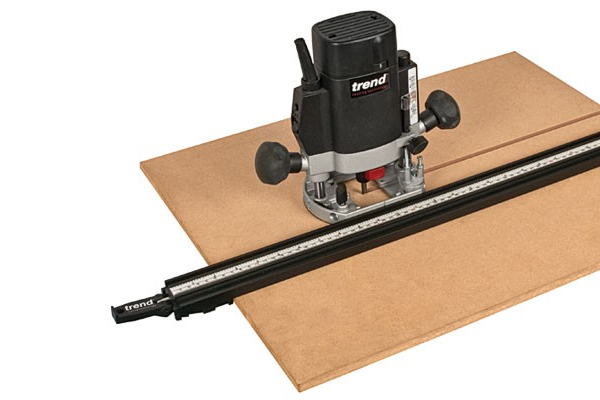 |
BattenThe term "batten" is used in routing to refer to a straight-edged guide against which the router passes. Battens can be fashioned from timber in your workshop or there are shop-bought models available (often called clamp guides) with added features such as clamps and measuring scales. |
|||
 |
BeadA bead is a small, usually convex moulding or profile available is many sizes and variations. Beads are often added to the edge of tables or cabinets to give a soft attractive edge; however, strips of beading can also be used for more practical purposes - for example, to cover the seam between a wall and floor, or to conceal electrical wires. |
|||
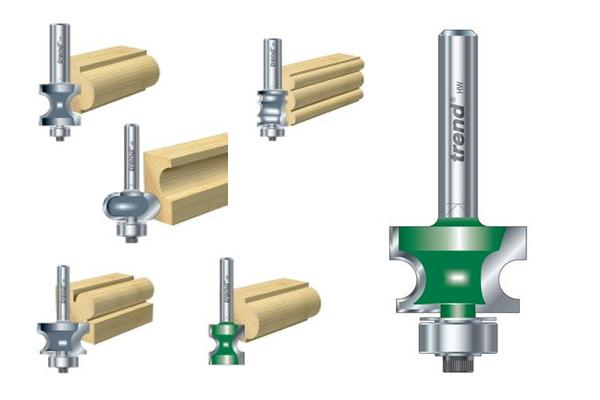 |
There are a large number of different beading router cutters designed to create various shapes of beads on the edge of materials. When a number of beads are placed together, they are known as reeds. Beads are often confused for mouldings, but the two are different. Bead tends to have less complex profiles compared to mouldings – and, usually, just consist of quarter or semi-circular shapes. |
|||
 |
Beam trammelA beam trammel is a hand-held routing accessory that consists of a straight bar with a pivot point onto which the router is mounted to cut curves and circles. |
|||
 |
BevelA bevel is an angle applied from the top to the bottom of a piece of material. There are bevel router cutters designed to produce this shape. |
|||
 |
Biscuit dowelA biscuit dowel comes in the form of an oval made from compressed wood which has a roughened surface in order to provide an adequate surface for any glue to adhere to. Biscuit dowels are used in the construction of biscuit joints. |
|||
 |
Biscuit jointA joint for timber or composite boards secured using oval shaped biscuit dowels. Slots are cut at regular intervals along the edge of two boards, then biscuit dowels are glued and inserted into one row of slots. The slots on the second board are then aligned with the exposed dowels to join the boards. This process can be carried out using a conventional router and biscuit jointing cutter. |
|||
 |
BitAnother term used to describe a router cutter. Commonly used in the US, but also used frequently in the UK. |
|||
 |
BlockboardBlockboard is made from cores of timber bonded together and covered with veneer on both sides. It is often used for furniture applications such as shelving and worktops. Due to its abrasive nature, it's recommended that you machine blockboard using tungsten carbide tipped router cutters. |
|||
 |
||||
 |
BolectionA bolection is a type of moulding which protrudes beyond the face of the frame into which it is inserted. It's often used to frame panels that have been inset, or positioned on flat surfaces to create mock panels. Bolection moulding is commonly found on doors, panelling and fireplaces and can be produced with some of the moulding router cutters available. |
|||
 |
Bottom cutThe term "bottom cut" is often used to describe a router cutter that has cutting edges on its end to allow plunge cutting. These cutting edges are often called central or centre tips. Specifications of individual cutters should tell you if they have bottom cut facilities or not. |
|||
 |
Box jointA box joint is also known as a comb joint or finger joint. The grooves of a box joint can be cut by a series of stacked cutters mounted on an arbor, or using a straight router cutter and a suitable dovetail jig with the appropriate accessories. |
|||
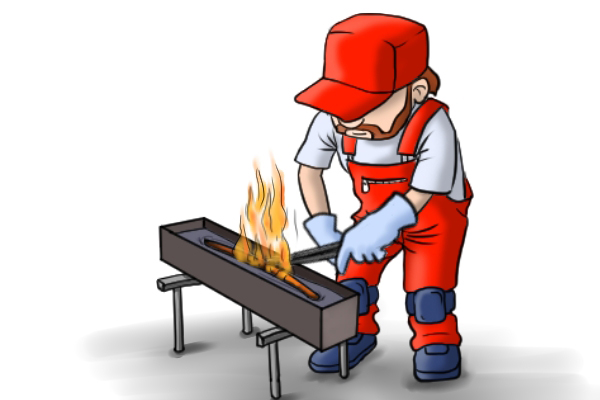 |
BrazingBrazing is a form of welding that is used to secure carbide cutting edges onto the body of router cutters. It involves heating a filler metal beyond melting point then using it to join two close-fitting parts. When the metal cools, it forms a solid bond between the two materials. |
|||
 |
Break-outBreak-out, also known as tear-out, is a term used to describe the splitting or breaking of a material's edge as it is being machined. It most commonly occurs in natural wood due ti its grain. |
|||
 |
Bridle jointA bridle joint is essentially a mortise and tenon joint but with the positions of the mortise and tenon reversed. Bridles joints are used for applications such as workbench or frame construction. |
|||
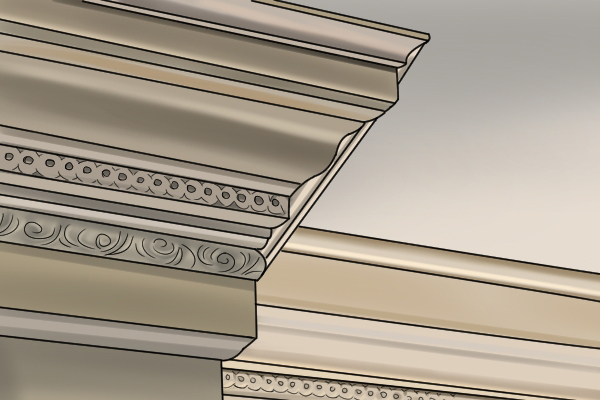 |
Built-up corniceA built-up cornice is produced by joining several different sections of moulding together for an especially decorative look. |
|||
 |
BullnoseA bullnose is a type of profile with a rounded convex shape (thought to resemble the rounded nose of a bull, hence the name). It is commonly found on the edges of cabinets or table tops. There are various beading router cutters designed that can produce bullnose profiles. |
|||
 |
BurningBurning the workpiece can be a common problem when routing. It is often caused by routing at too slow a feed rate, removing too much material in a single pass, or when the non-cutting part of the tool rubs against the material. It can also be an indicator that the cutting edges of the router cutter are dull and need resharpening. |
|||
 |
BurrsBurrs, also known as burr router cutters, are small multi-fluted rasps that are used for deburring, cleaning welds and carving wood. They are commonly used in portable hand grinders or light duty hand routers. |
|||
 |
||||
 |
Butt jointA butt joint is formed from two pieces of wood joined together with no overlap, shoulders, or tenons. It is the simplest yet weakest joint, but can be reinforced with fasteners such as nails or screws. Butt joints are most commonly used for light-duty framing applications. |
|||
 |
Butterfly splines, keys and inlaysButterfly splines are bow-tie shapes pieces of timber used to join boards together in a butterfly joint. They prevent splits in material from worsening, or they can be just decorative. A spline is placed over the join or split, and because of its tapered ends, makes it very difficult for the two materials to come apart, thus making it one of the strongest joints. |
|||
 |
Butterfly inlays are similar to splines but are usually made from much thinner materials such as laminate or veneer, and are usually used to add decoration to an item, rather than serve a practical purpose. Both splines and inlays can be made from the same, or a different species of timber to give an attractive contrast against the material they are inserted into. There are butterfly spline router cutters used to rout the profiles for butterfly splines, keys and inlays. |
|||
C |
||||
 |
Capillary cutterA capillary cutter produces a radiused groove designed for use in window and door joinery, for the purpose of draining off water. |
|||
 |
Carbide (tungsten carbide)Tungsten carbide is a very hard and durable compound used to make router cutters. Some cutters are made from solid carbide, while other have carbide cutting edges brazed onto the steel shoulders of the body. Please note that tungsten carbide requires careful handling and storage as it's strong but can be brittle. |
|||
 |
Carbon steelAll steel is an alloy of iron and carbon, but carbon steel generally refers to steel with 0.6 to 1.8 % carbon content. It's used for twist drills and machine cutters |
|||
 |
CarcassIn woodworking the term "carcass" refers to the external framework of a box-like piece of furniture such as a cabinet, without the doors and fittings. |
|||
 |
CasementA casement is a glazed frame or sash which is either hinged or pivoted. Casement windows are hinged at the side, rather than from above or below. |
|||
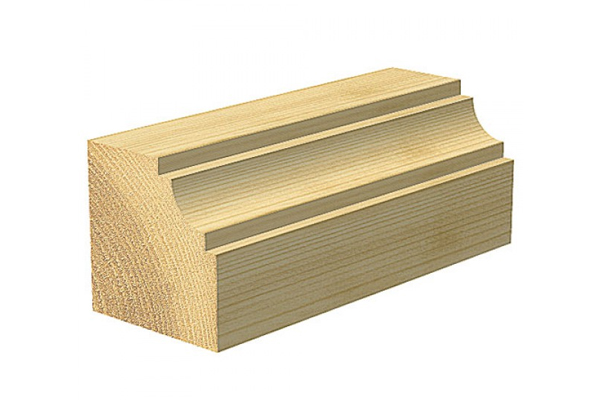 |
CavettoA cavetto is a concave moulding with a quarter-circle cross section and a quirk shoulder. It can be produced using a bearing-guided cavetto cutter. |
|||
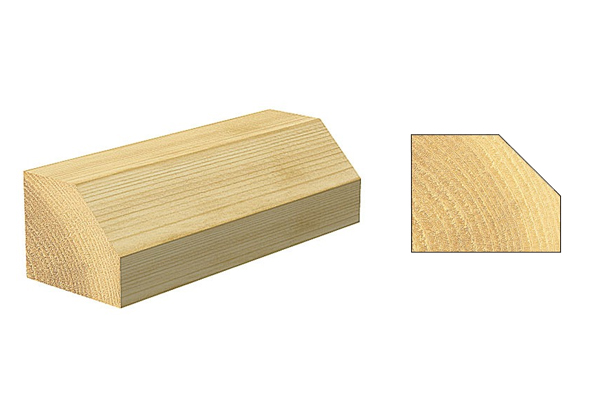 |
ChamferA chamfer is a corner that is angled so that the edge of the material is removed equally on each face. There are various v groove and chamfer router cutters for creating chamfers of different sizes. |
|||
 |
Chatter marksChatter marks are ripples left on a cut surface and are usually caused by feeding too quickly or using a blunt router cutter. |
|||
 |
CheekThe cheek is the name given to a strip of plastic or timber used as an extra guide. It's often used to extend the bearing surface of a guide fence to prevent the router or workpiece running off course when being fed in. |
|||
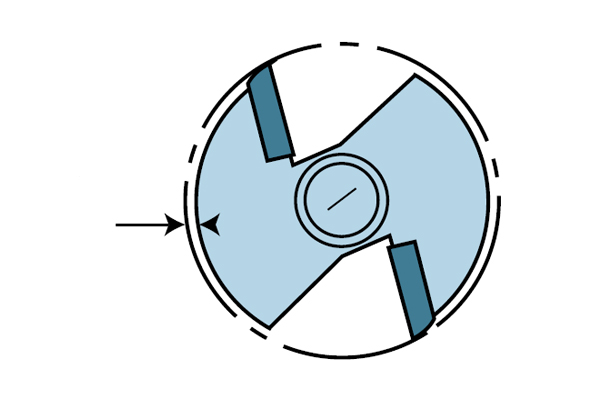 |
Chip limitingA router cutter with a chip limiting design (also called anti-kickback) will have a small space between the surface of the cut and the cutter's body in order to control the amount of material that is removed and the feed rate. |
|||
 |
ChipboardChipboard is a type of man-made wood particle board, usually faced with a veneer, melamine foil or plastic laminate, and used to make shelf units and cupboards. It is recommended that tungsten carbide tipped cutters are used to machine this material as it is particularly abrasive. |
|||
 |
Clamp guideA clamp guide, also sometimes called a batten, comes in the form of a strip of material (usually aluminium), which can be used to guide a hand-held router in a straight line. Clamp guides are useful when cutting larger sheet materials into smaller pieces. |
|||
 |
Clearance angleThis is the angle of the cutter's edge relative to its body. |
|||
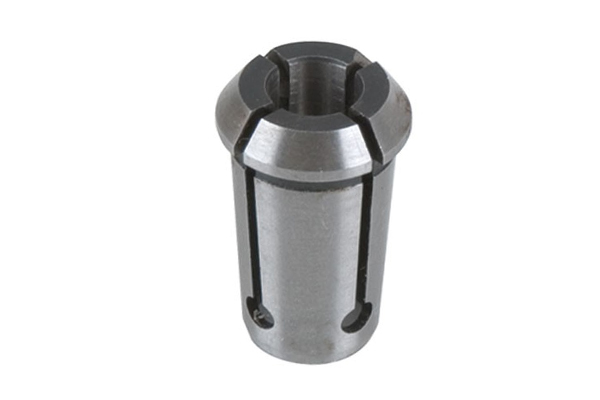 |
ColletA collet is a gripping device which fits on the end of a routing machine spindle to hold router cutter shanks while working. A collet is the equivalent of a chuck on a drill. |
|||
 |
Collet capacityThe collet capacity refers to the diameter of cutter shank the collet can accept. Common sizes are: ¼" (6.35mm), ⅜" (9.52mm), ½" (12.7mm), 8mm (5/16") and 12mm (slightly less than ½"). |
|||
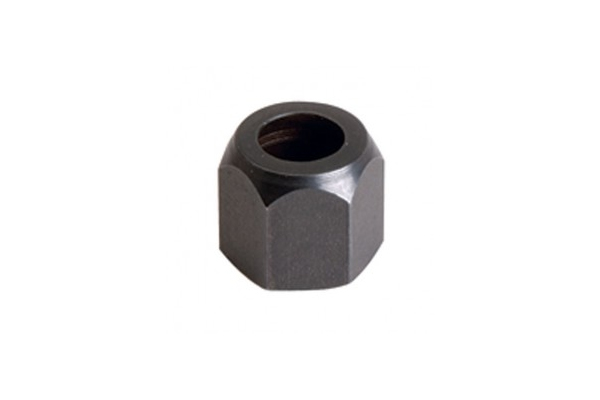 |
Collet nutA collet nut is a hexagonal nut that retains the collet in place on the spindle of a router. |
|||
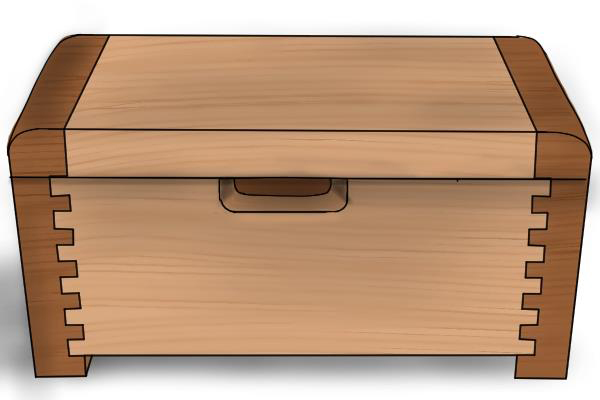 |
Comb jointA comb joint, also called a box joint or finger joint, consists of parallel cut fingers which interlock with one another. Comb joints can be used to make a variety of objects from jewellery boxes to kitchen cupboards. |
|||
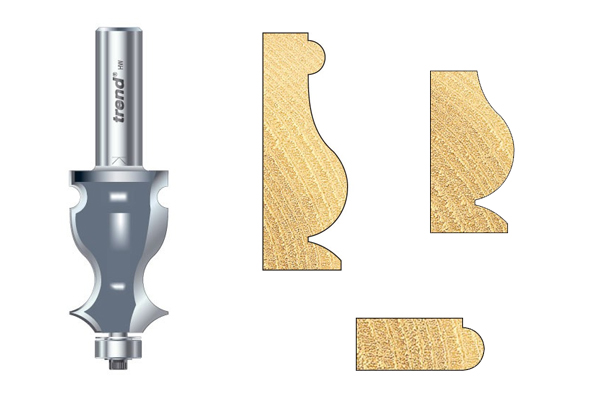 |
Combination cutterA combination cutter is one that can cut more than one profile or shape. This is usually done by applying it at different depths and angles. |
|||
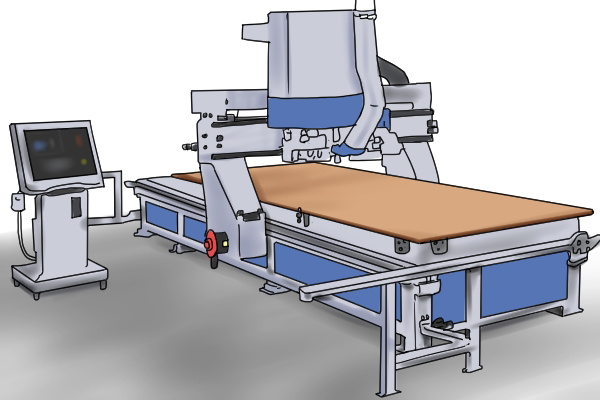 |
Computer numerical controlled (CNC)CNC routing involves using a computer to control the movement of a cutting tool such as a router. A computer program is used to define the feed rate and cutting path of the router, for extreme accuracy. |
|||
 |
ConcentricOne or more circles with the same centre point and within each other. |
|||
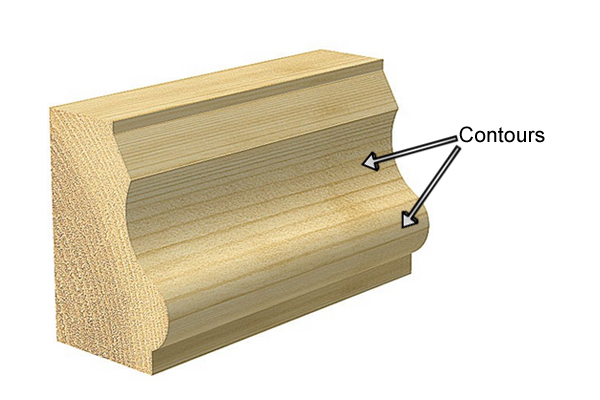 |
ContourThe term "contour" refers to the profile or section of a moulding. |
|||
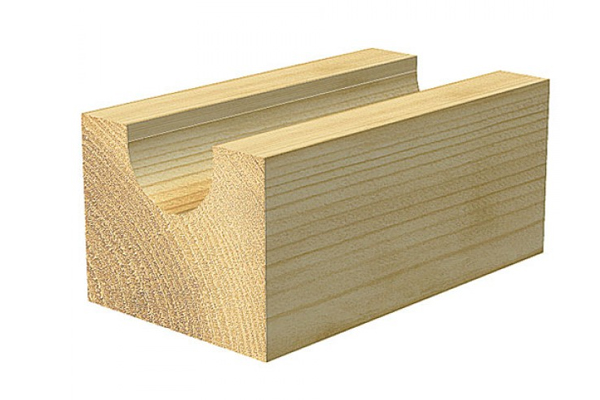 |
Core boxA core box is a type of cut with a rounded bottom. It is often created using a radius cutter or veining bit. |
|||
 |
CounterboringA way of recessing the head of a bolt or screw into a material's surface. Tools which drill and cut the recess at the same time are often called counterbores. |
|||
 |
CountersinksSimilar to counterbores, countersink tools cut countersunk recesses as they drill, to receive bolts or screws with countersunk heads. |
|||
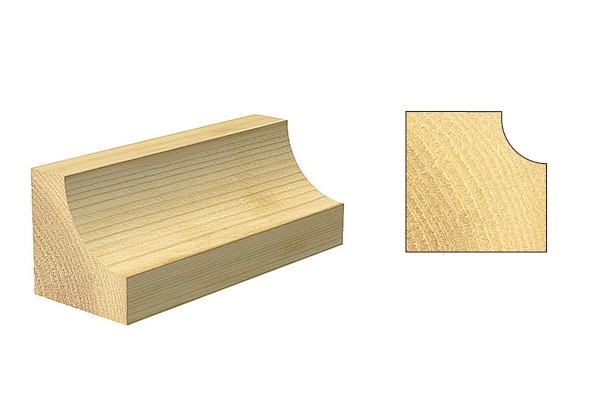 |
CoveA cove is a quarter round concave moulding, normally produced by a radius cutter on the edge of materials. |
|||
 |
CrampAnother word for a clamp. Usually to describe a clamp which is temporarily positioning components. |
|||
 |
Crown moulding / cornice mouldingCrown moulding (also known as cornice moulding) is typically positioned over the join between wall and ceiling to create a more subtle transition between the two. There are different types of moulding router cutter designed to produce cornice moulding profiles. |
|||
 |
Cut string nosingStrips of moulding or beading that can be applied to the outside edge of a stair tread in order to cover the end grain. When used in this way these strips are called cut string nosing. |
|||
 |
Cutter blocksNormally refers to the main body of a spindle cutter head into which cutters are inserted and secured. The term 'cutter block' is also sometimes used when referring to the body of router cutters with replaceable cutting edges. |
|||
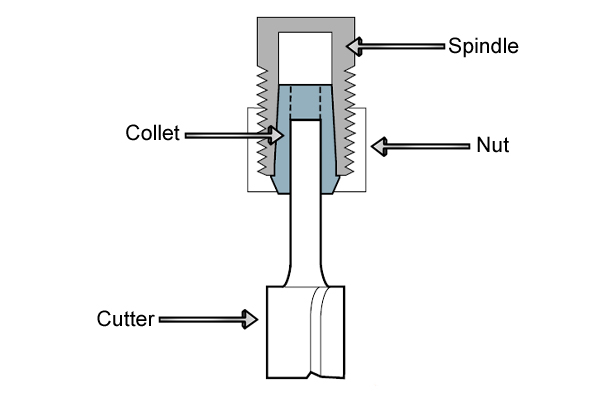 |
Cutter creepCutter creep is used to describe the movement of the router cutter shank within the collet during use. This is usually caused by insufficient tightening or collet wear. |
|||
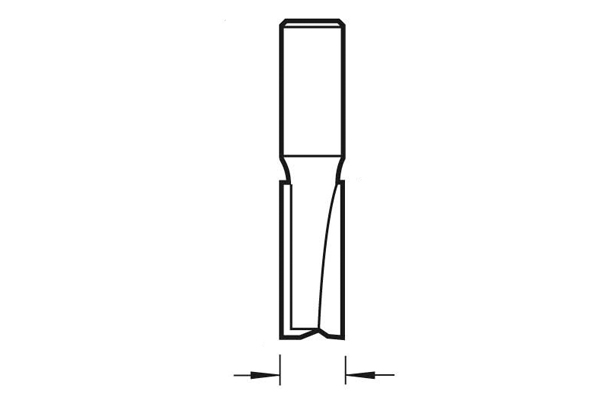 |
Cutting diameterThe cutting diameter is the maximum width of the path made by a router cutter in one pass. |
|||
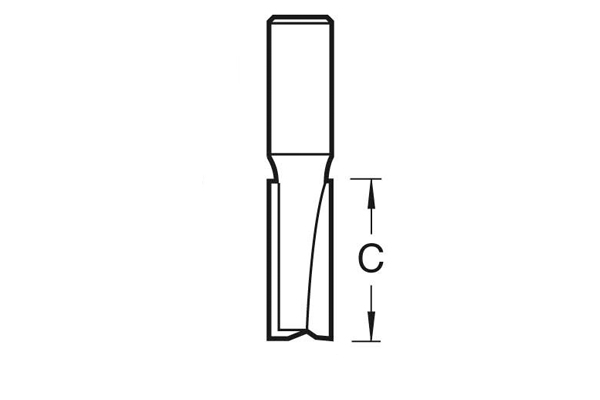 |
Cutting lengthThe cutting length is the maximum length of the full cutting edge of a router cutter. |
|||
 |
||||







